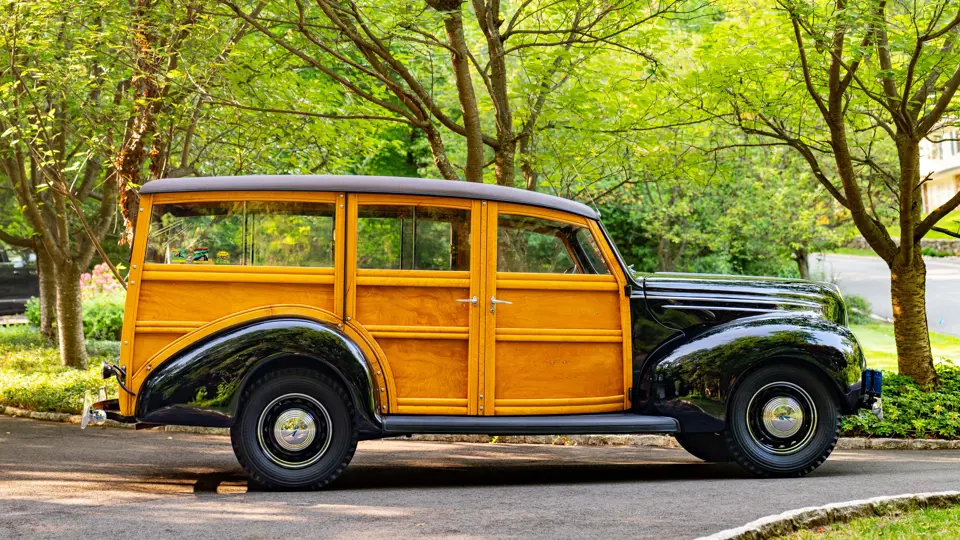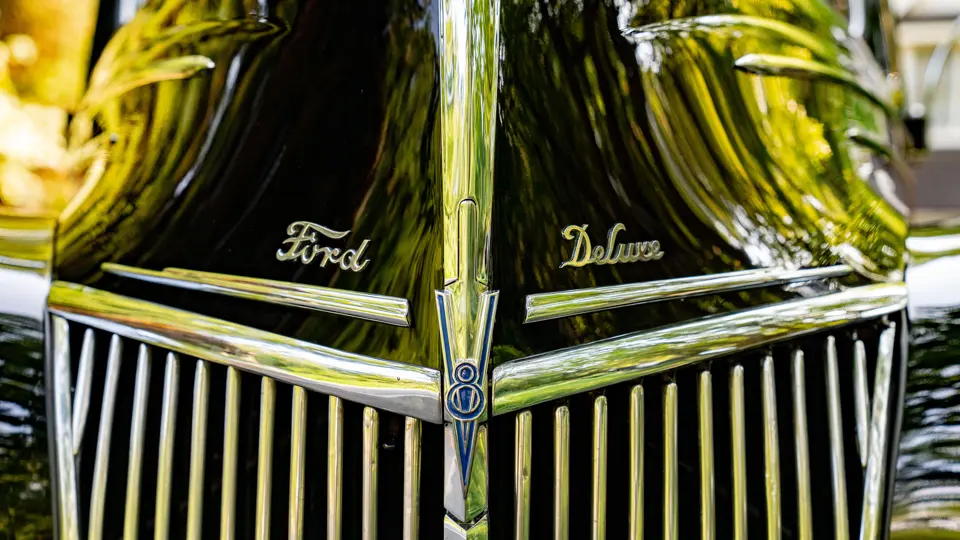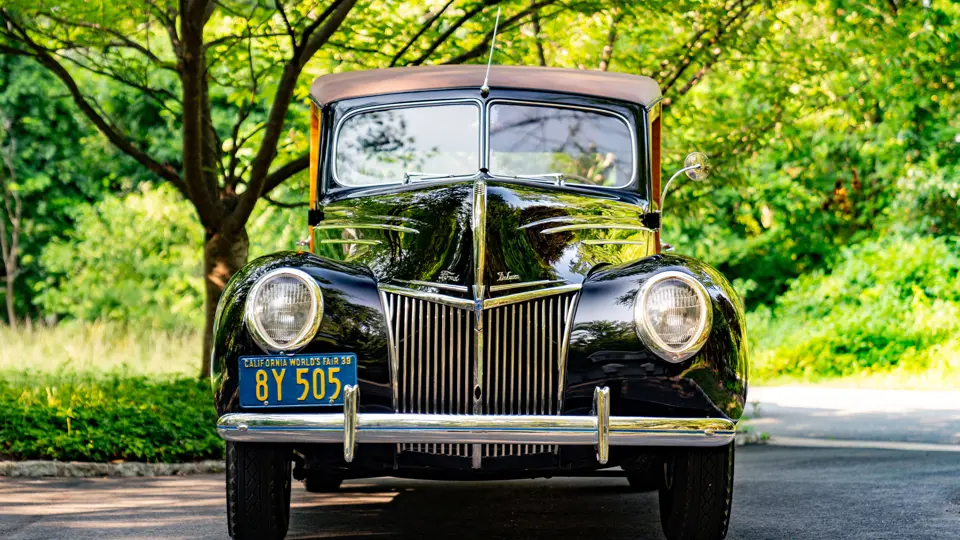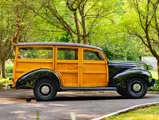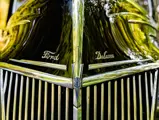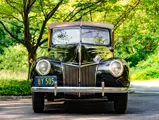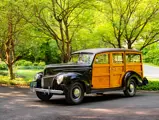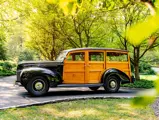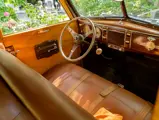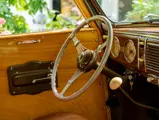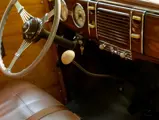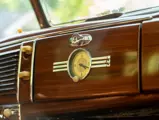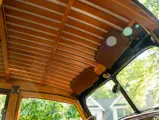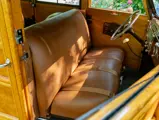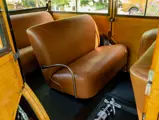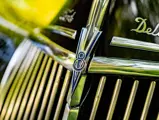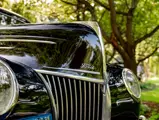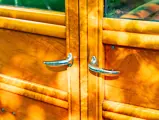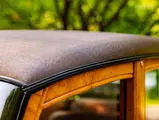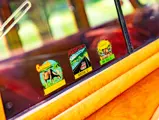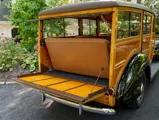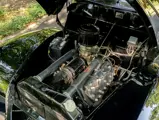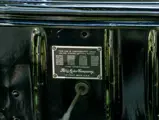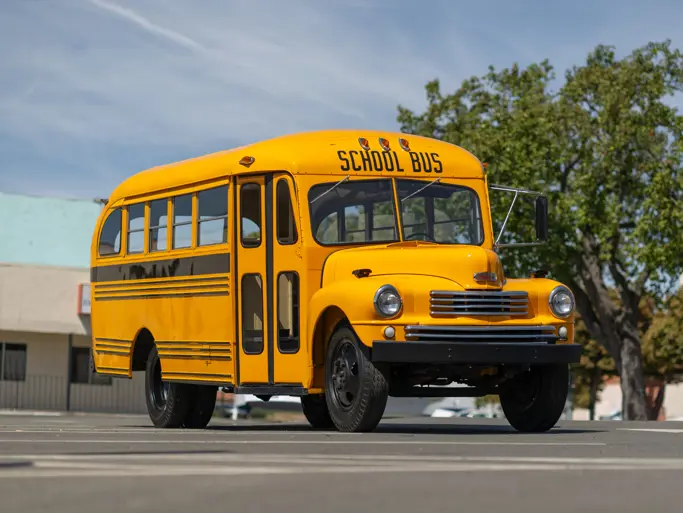
1939 Ford DeLuxe Station Wagon
{{lr.item.text}}
$71,500 USD | Sold
The Sportsman Collection
{{bidding.lot.reserveStatusFormatted}}
- Highly desirable 1939 styling with rare bird’s-eye maple construction
- Restored by Ford "woodie" expert Nick Alexander and formerly part of his collection
- One of 6,155 Deluxe Station Wagons produced for 1939
This Deluxe Station Wagon was restored by renowned Ford “woodie” wagon expert and collector Nick Alexander. Over 15 years, Alexander assembled what was arguably the finest collection of Ford and Mercury woodies of the flathead era. He searched the United States for the best examples, preserving original features or restoring them back to factory condition. Alexander owned the car from May 2007 to August 2009. It has known ownership history from 1969, in addition to documentation from its first owner.
Ford built 9,432 wagons for 1939—3,277 Standard and 6,155 Deluxe models. Featuring that year's highly desirable styling, this Deluxe Station Wagon is even more extraordinary for being one of the rare examples constructed of beautiful bird’s-eye maple. The original owner, G.E. Heckert, resided in the upscale Hope Ranch section of Santa Barbara, California. A copy of his 1941 certificate of ownership remains with the car, as do the original California plates. It is said that Henry Ford kept a small inventory of bird’s-eye wagon parts to use on orders for special customers or for presentation on a particular occasion. One wonders if perhaps Mr. Ford and Mr. Heckert had a connection.
The term “bird’s-eye” refers to the wavy grain pattern of the wood, resembling a sea of tiny swirling eyes and known to occur in several species, including ash, beech, birch, mahogany, walnut, and sugar maple—the latter found in the forests of Michigan’s Upper Peninsula, where Ford’s Iron Mountain facility was located. While the exact process of bird’s-eye grain formation remains a mystery, scientists theorize that it stems from low soil pH and a sugar deficit within the tree, which together arrest the growth of new shoots, creating tiny knots, or “eyes.”
Whatever the genesis of its beauty, the stunning wood construction of this three-row wagon contrasts wonderfully with its lustrous black paint and blackwall tires offset with trim rings, which give it an almost sinister look. Power comes from a 90-horsepower 221-cubic-inch flathead V-8 mated to a three-speed manual transmission.
The interior features rich brown leather and the dash has been restored to its original woodgrain. Notable equipment includes the very desirable banjo steering wheel, glovebox lock, vanity mirror, and radio with windshield header-mounted antenna. Lap belts have also been added for safety. With its known history, rare bird’s-eye maple panels, and high-quality restoration by a foremost expert, this Deluxe Station Wagon has much to recommend it.
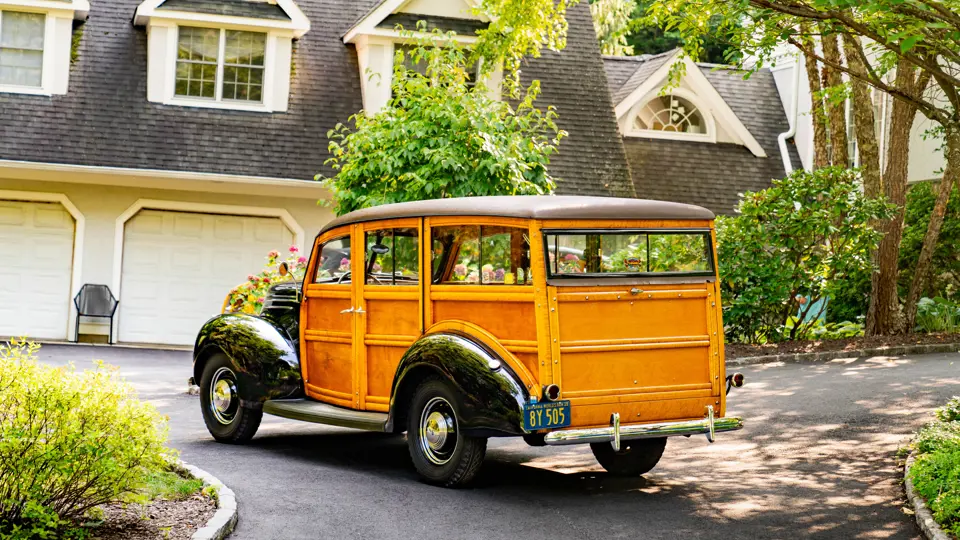

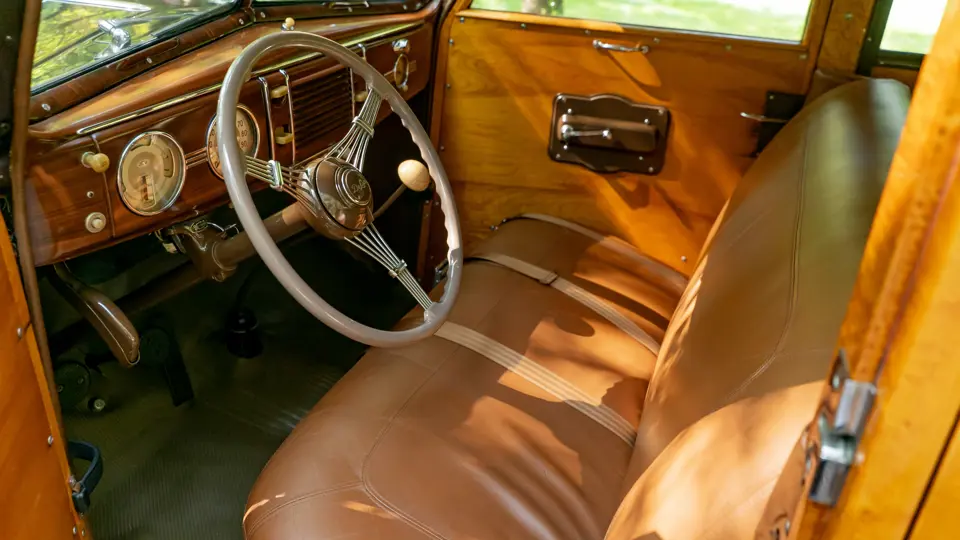




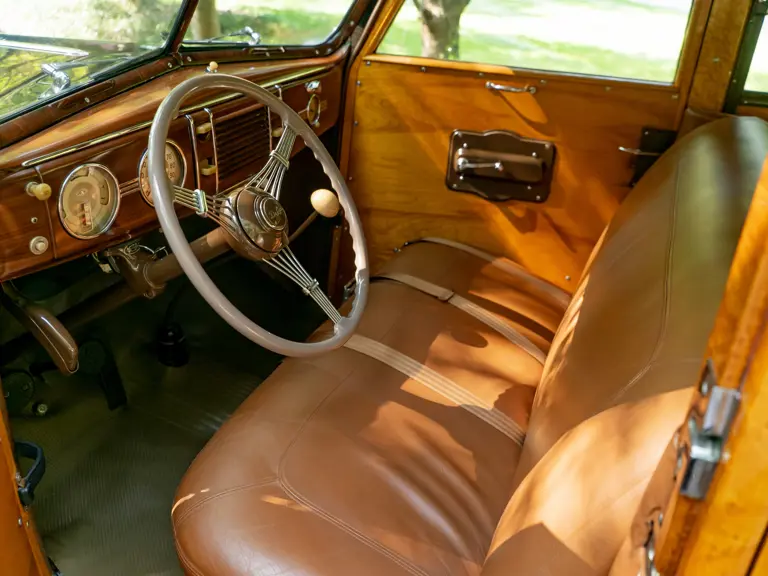
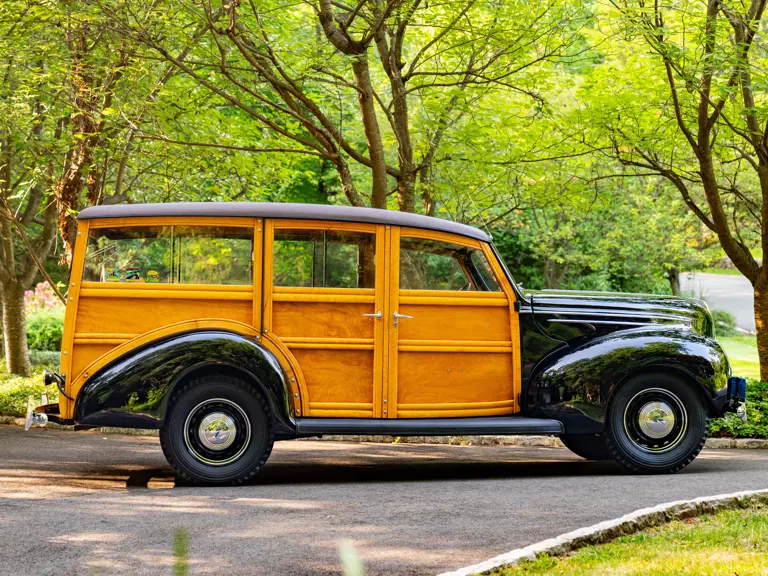

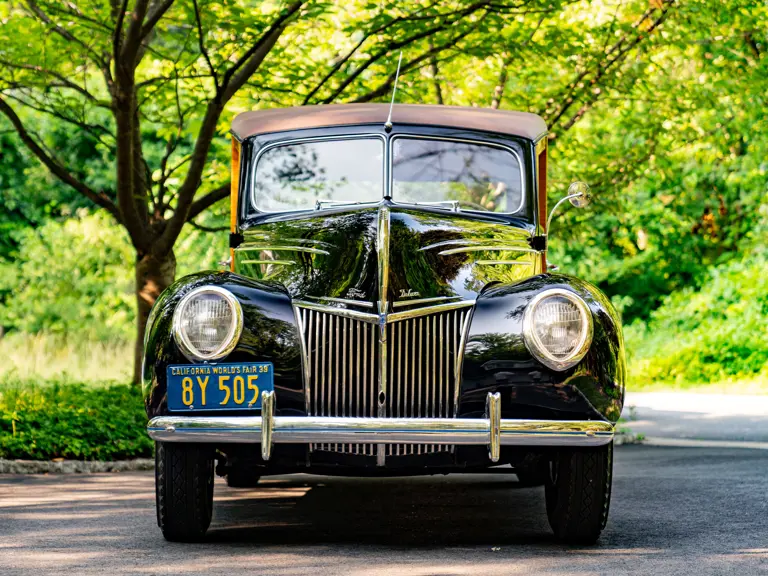
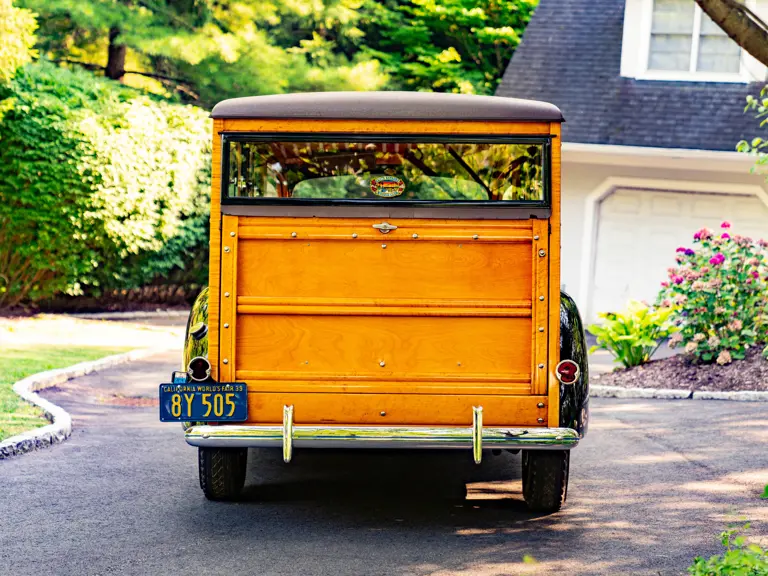
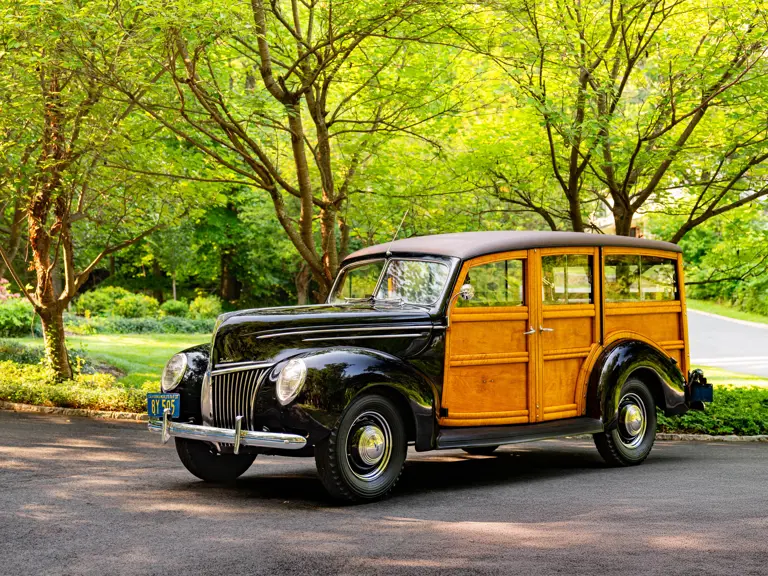
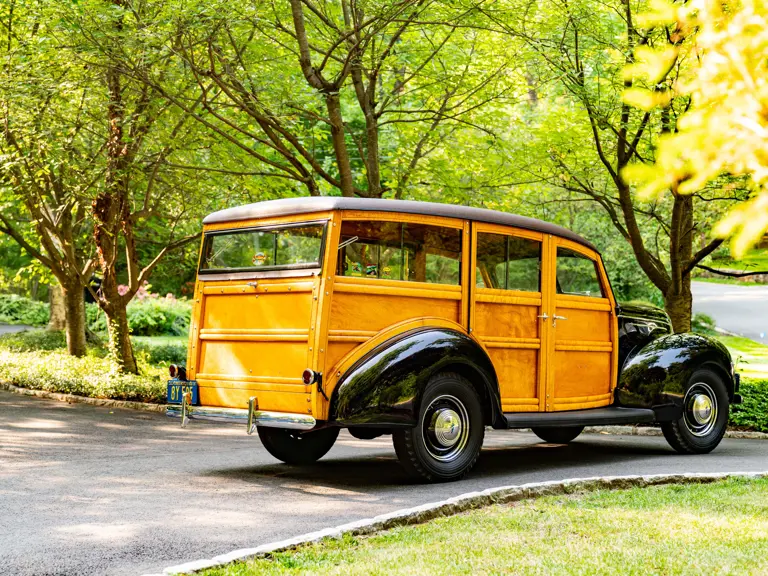
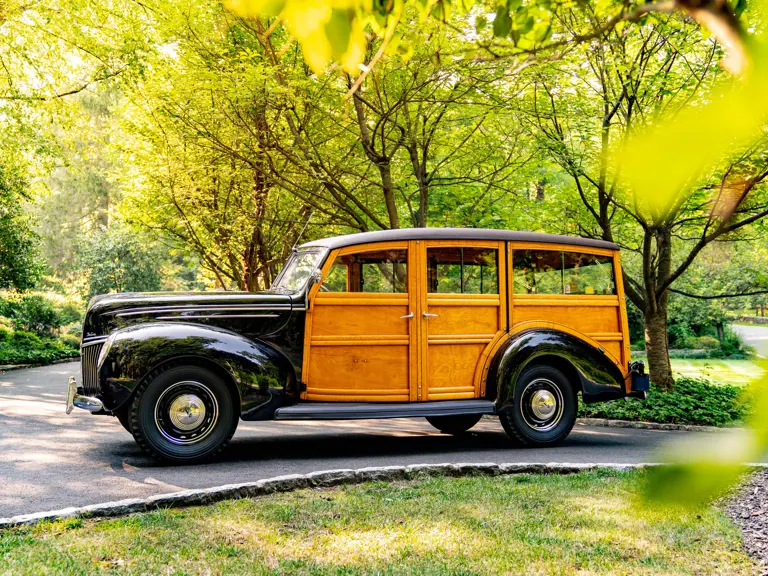
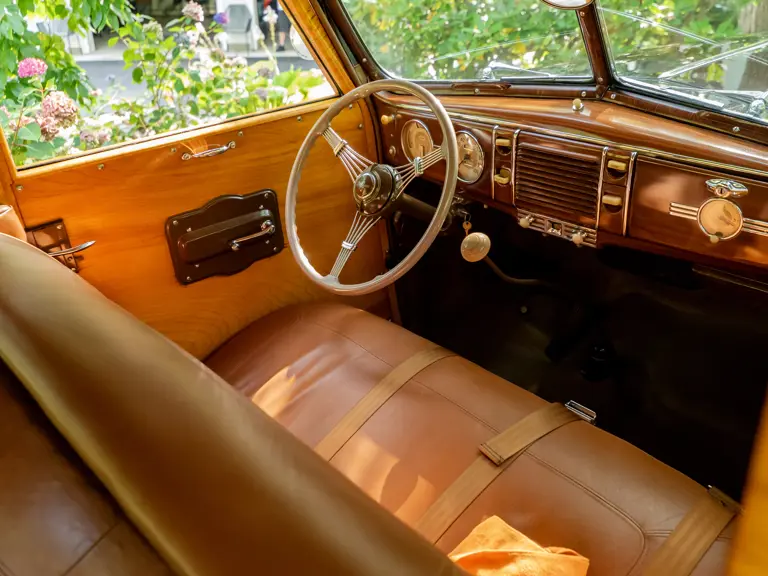
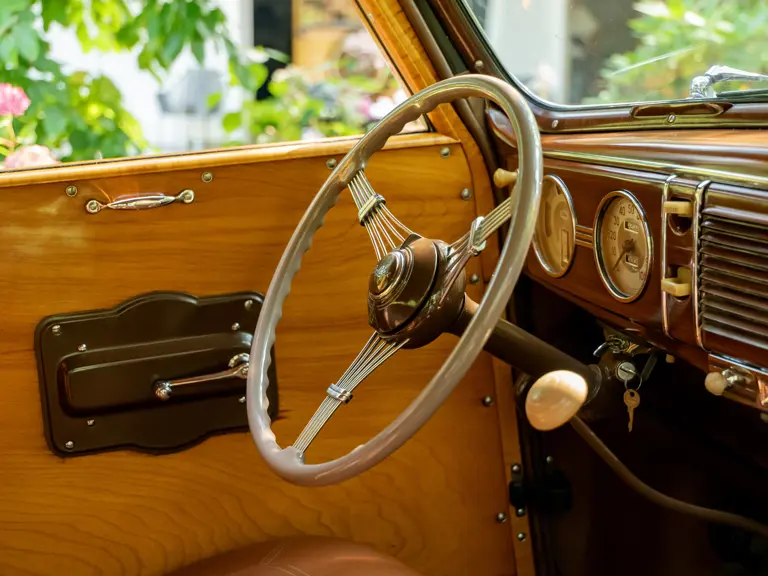
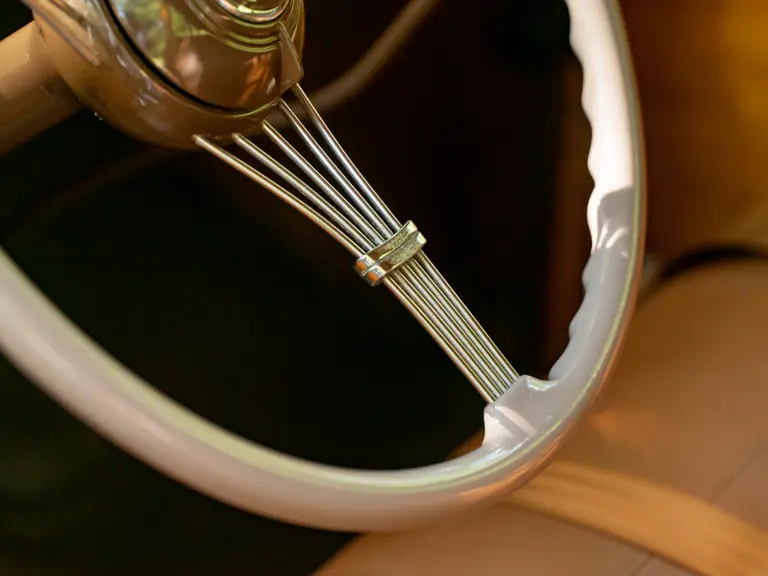

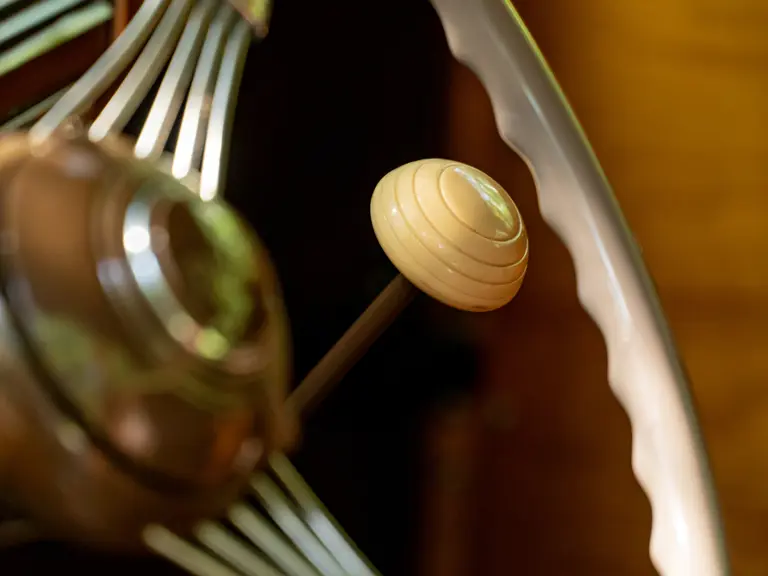
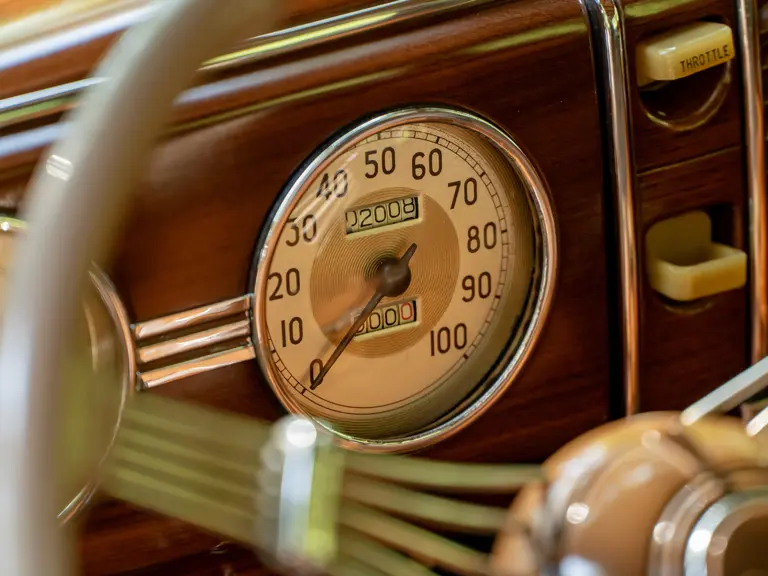
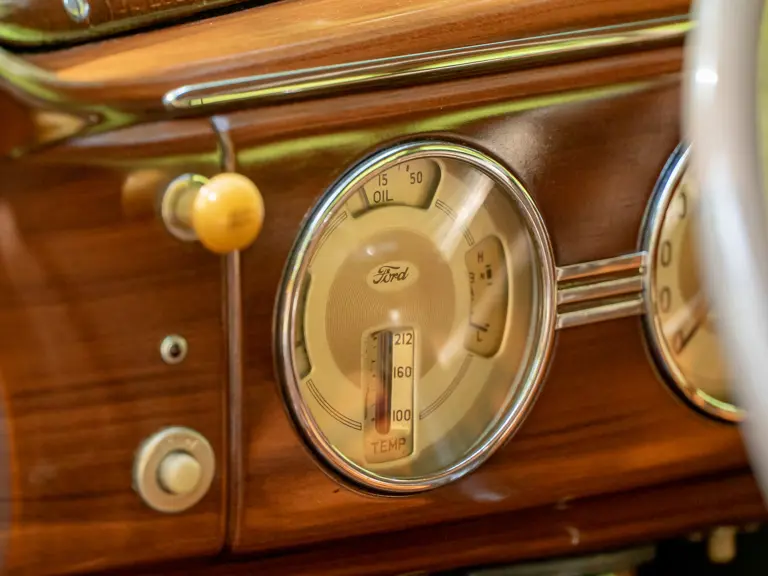
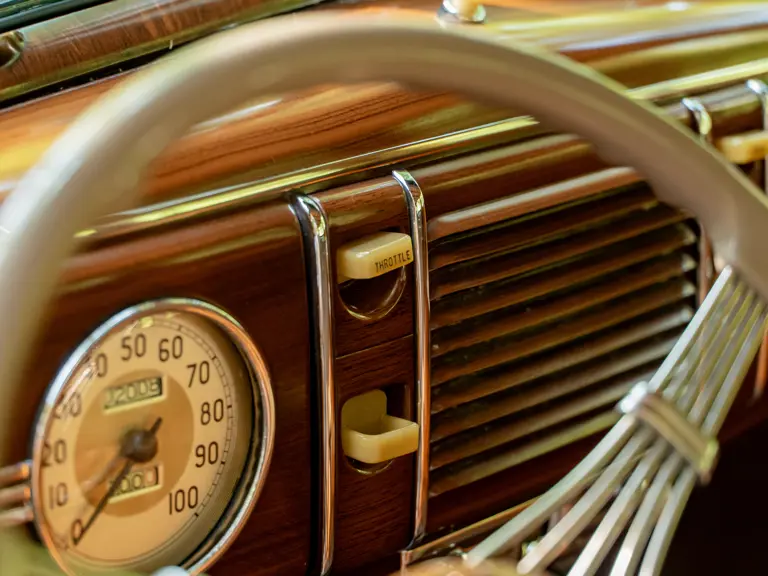
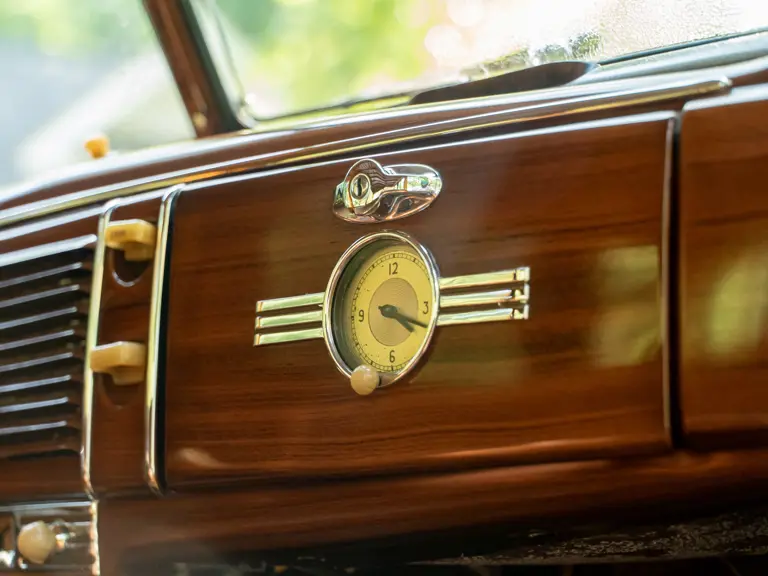
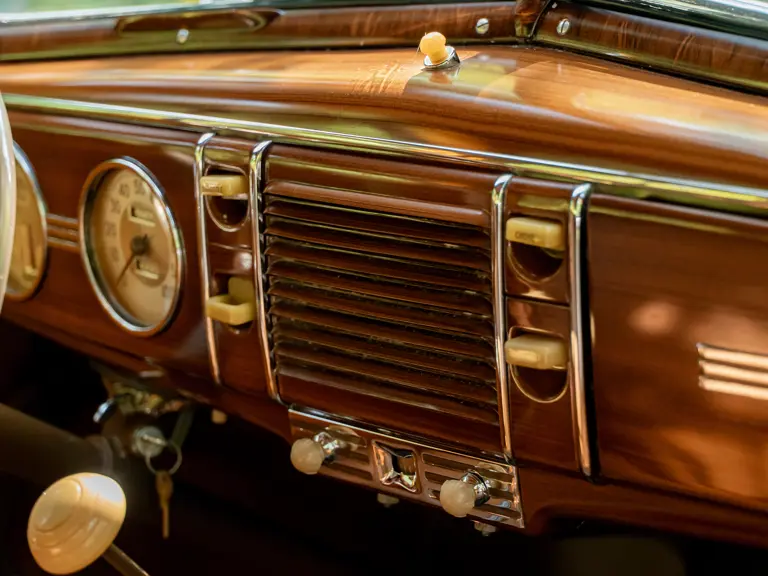
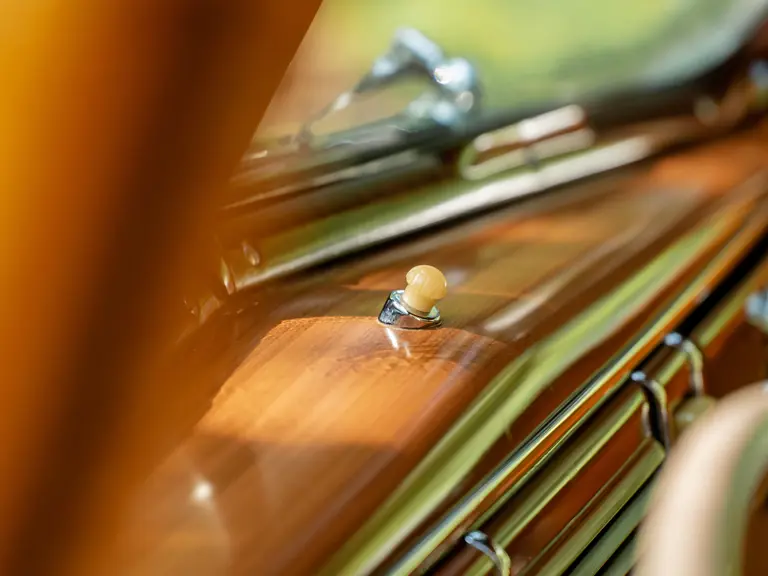
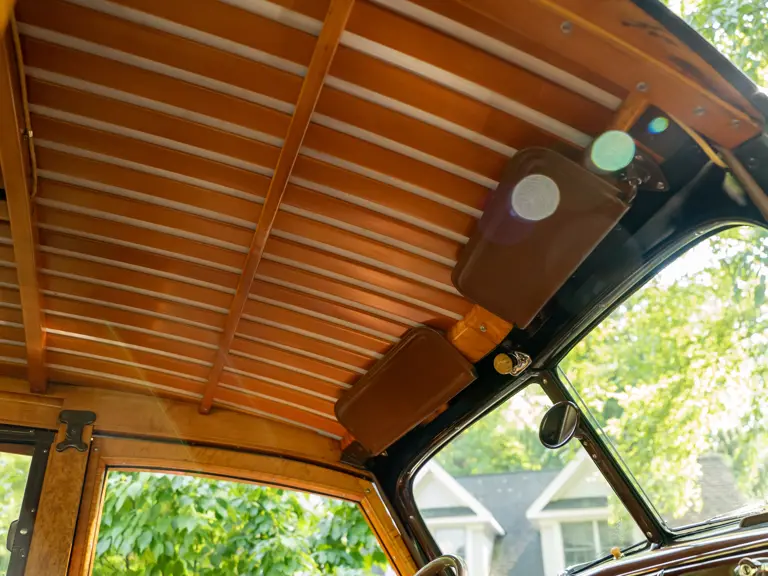

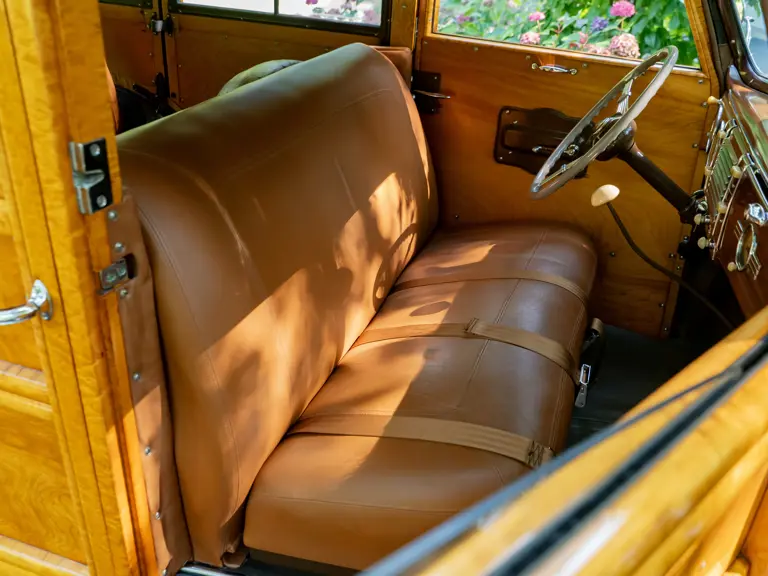
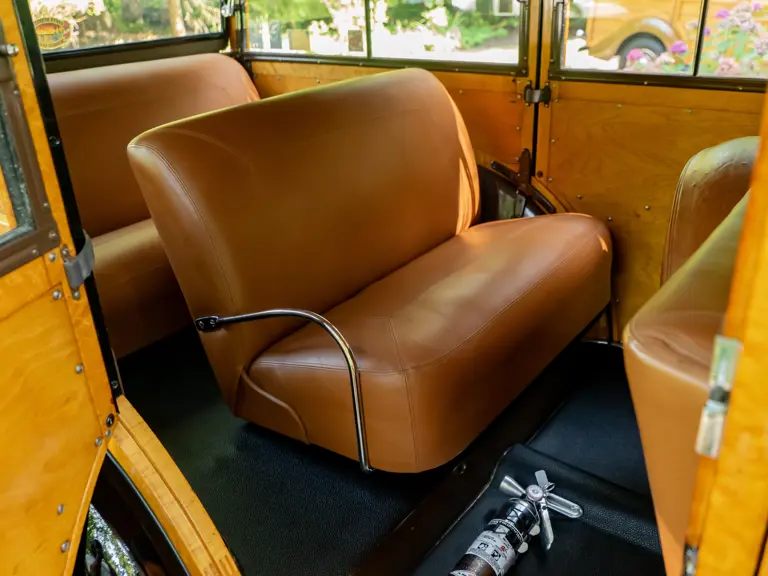
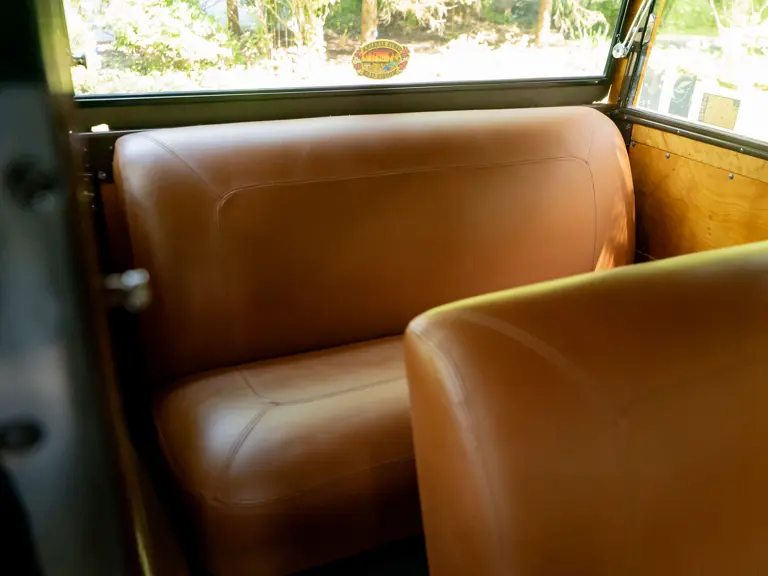
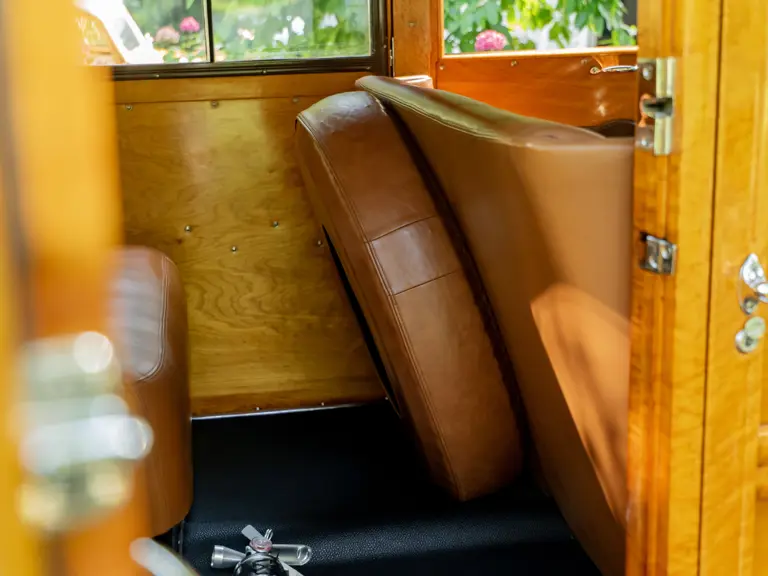
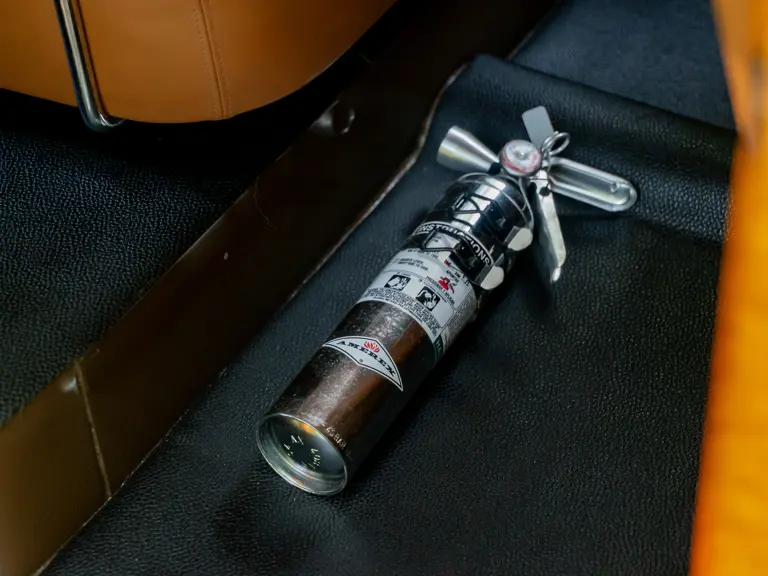

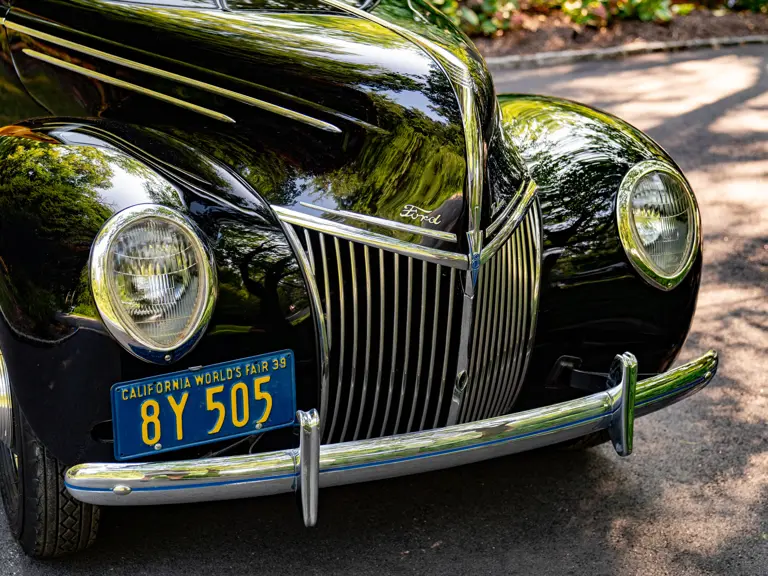
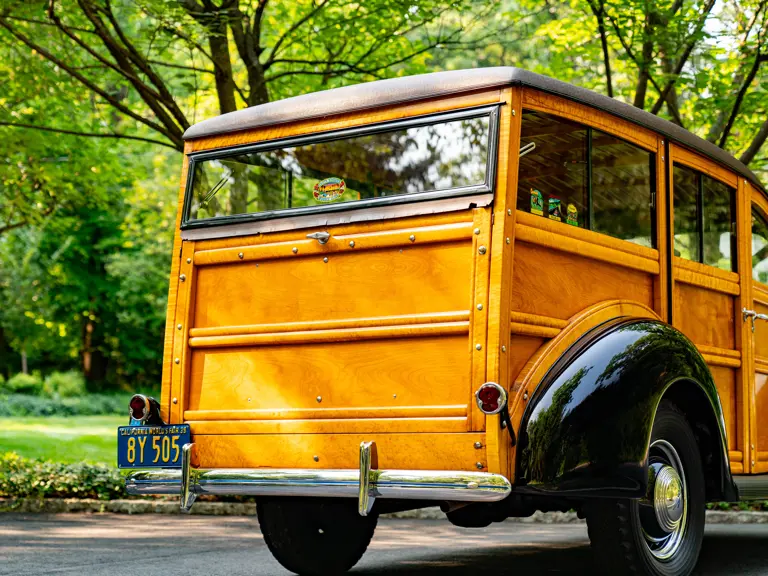
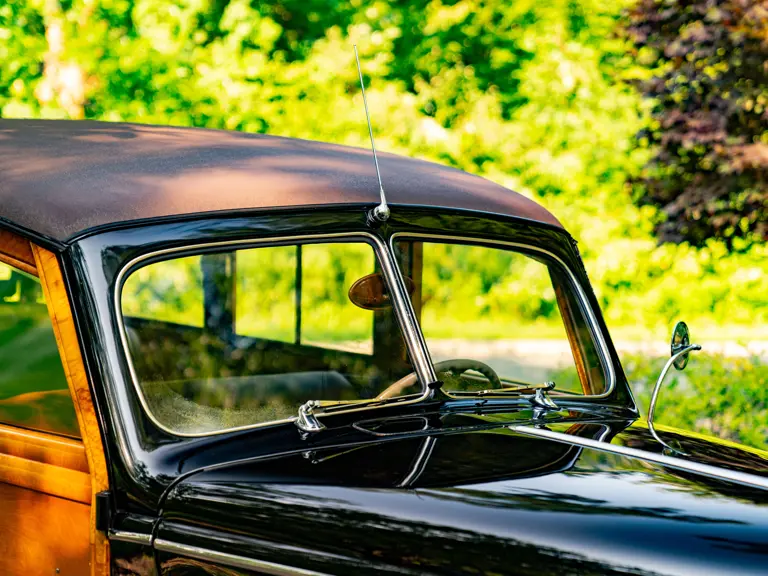
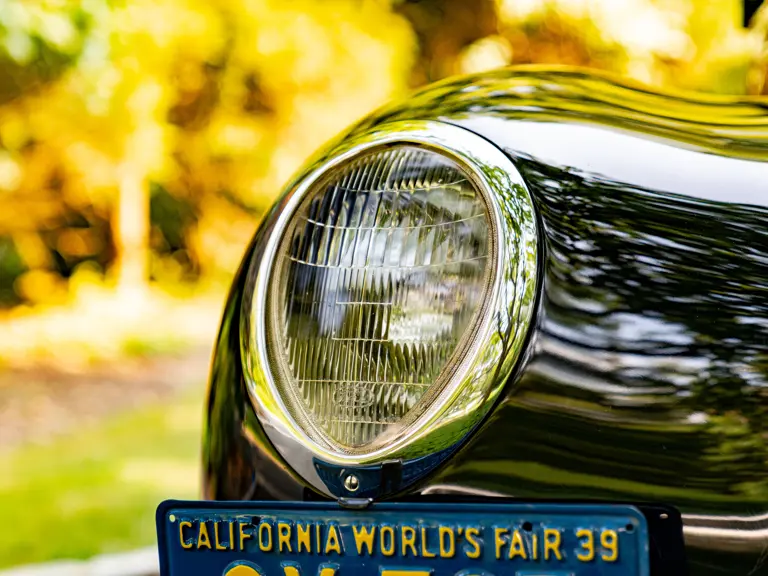
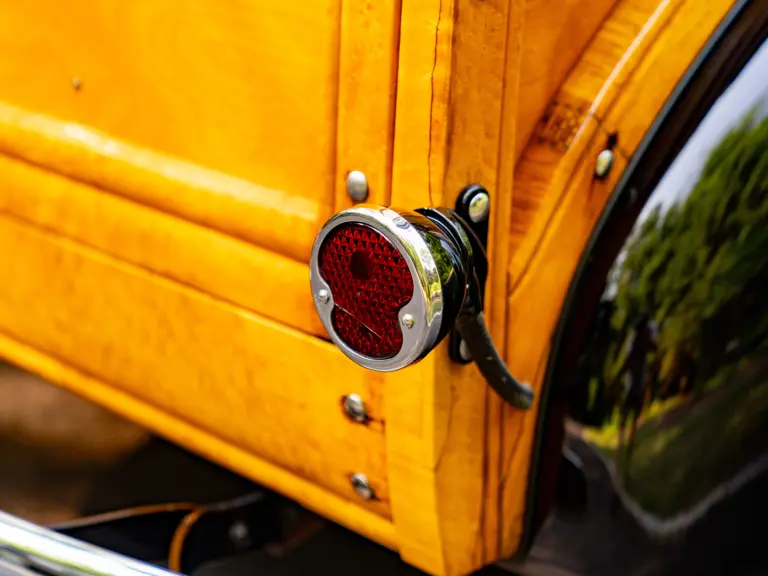
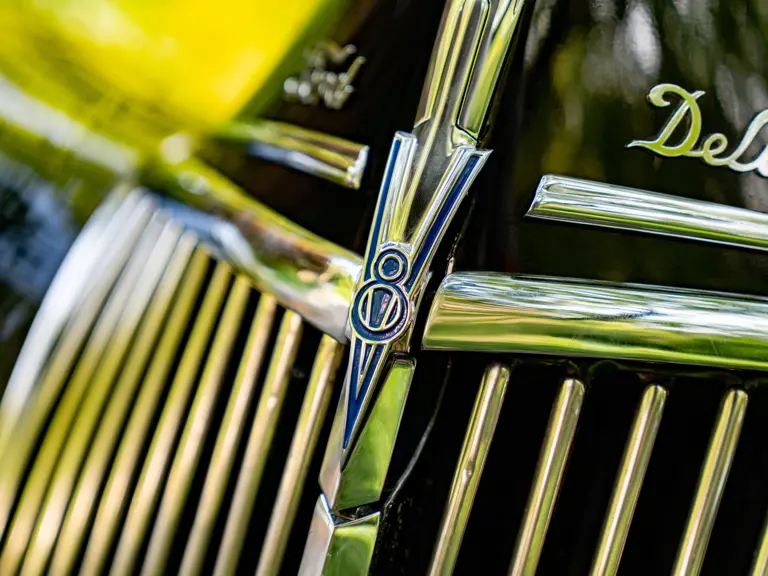
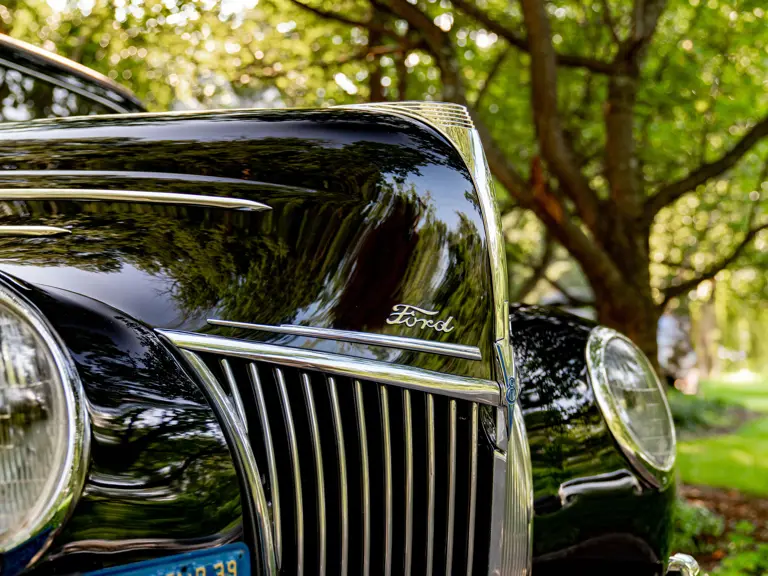
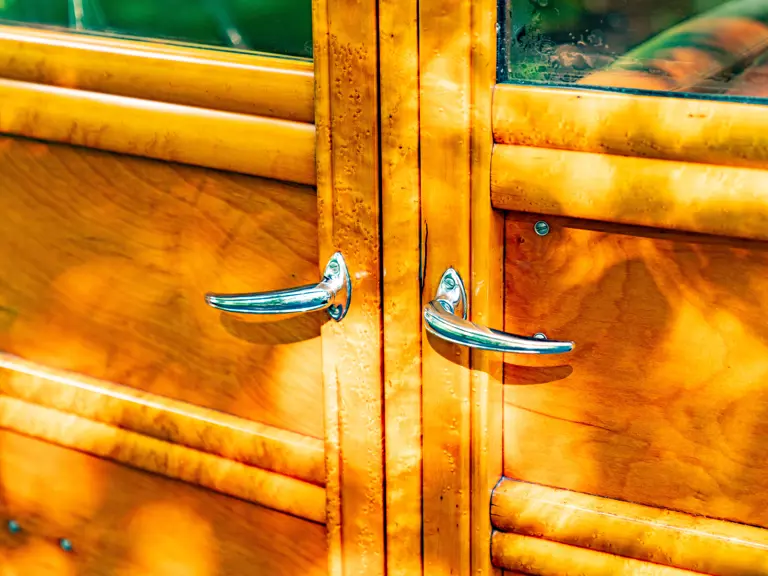
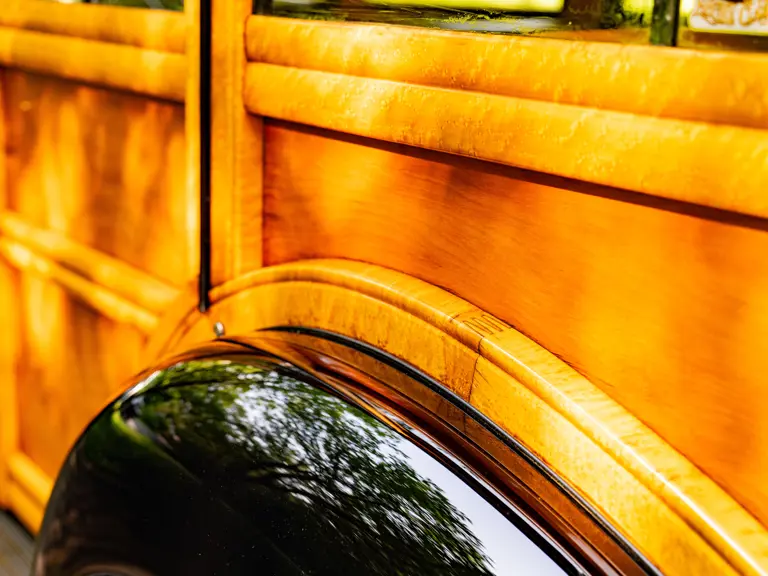
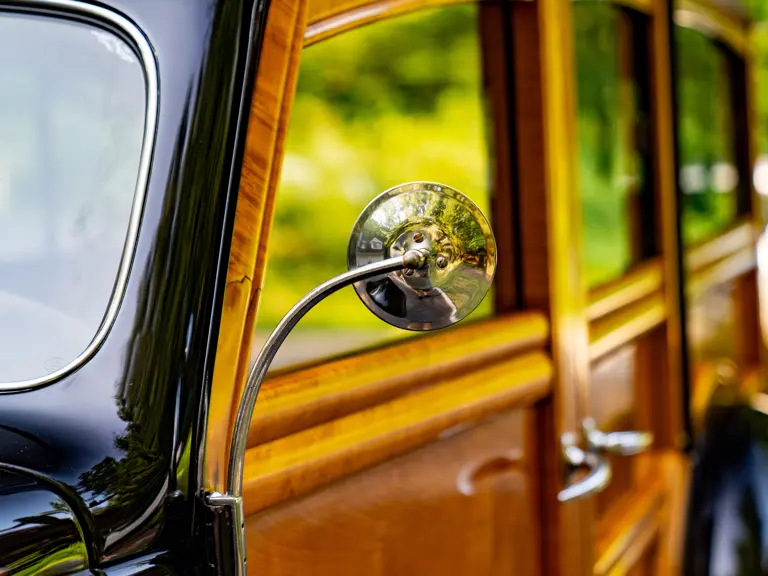

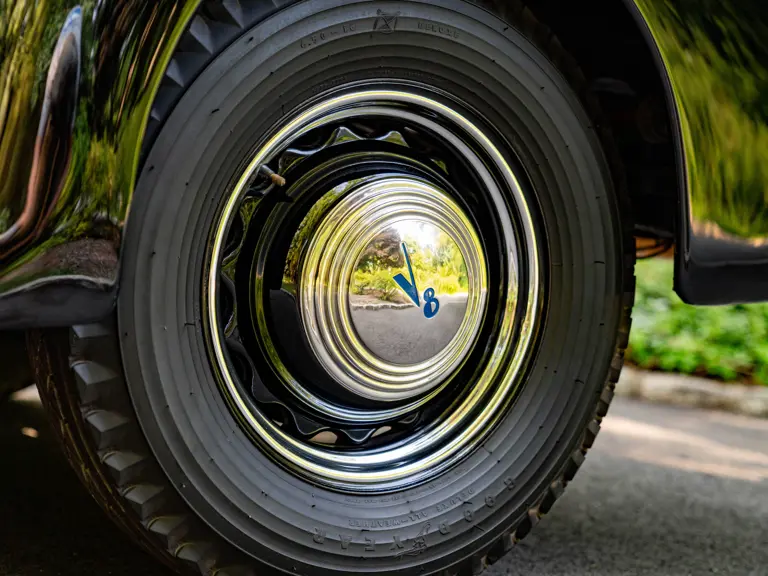

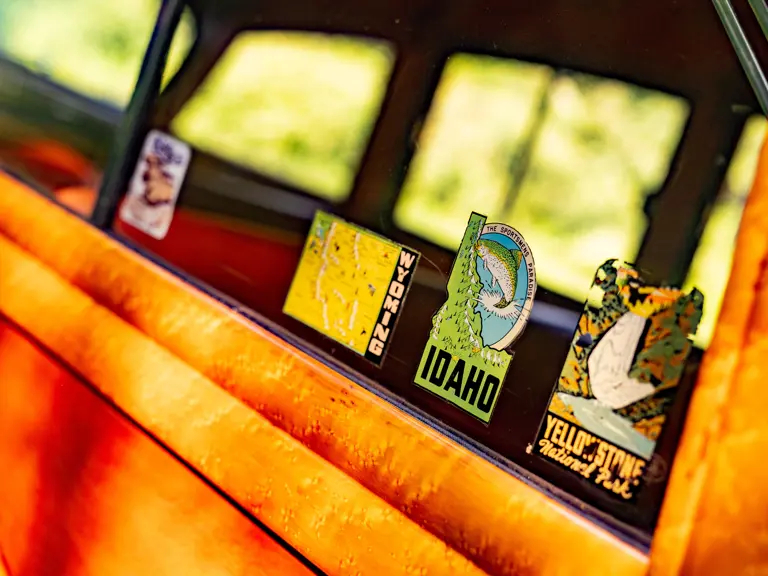
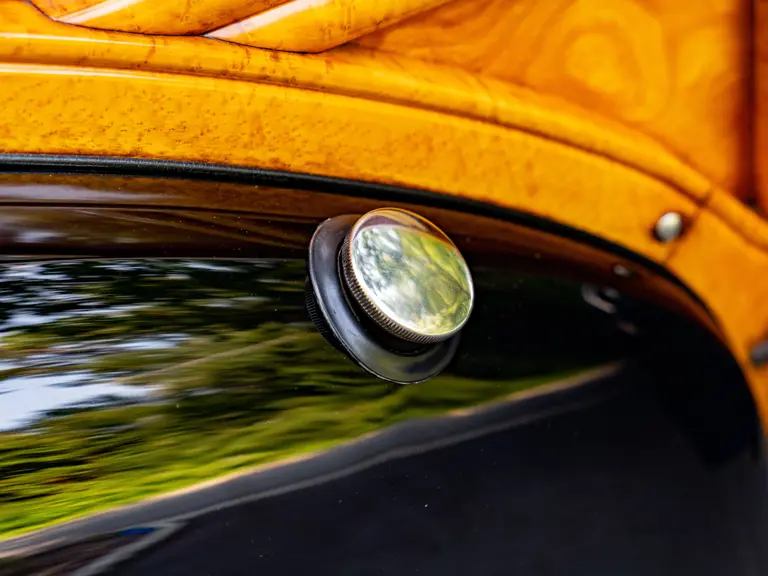
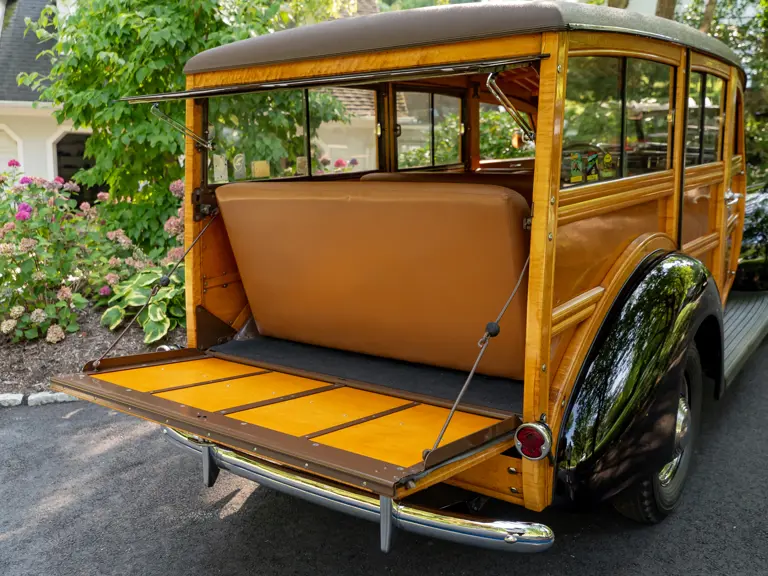
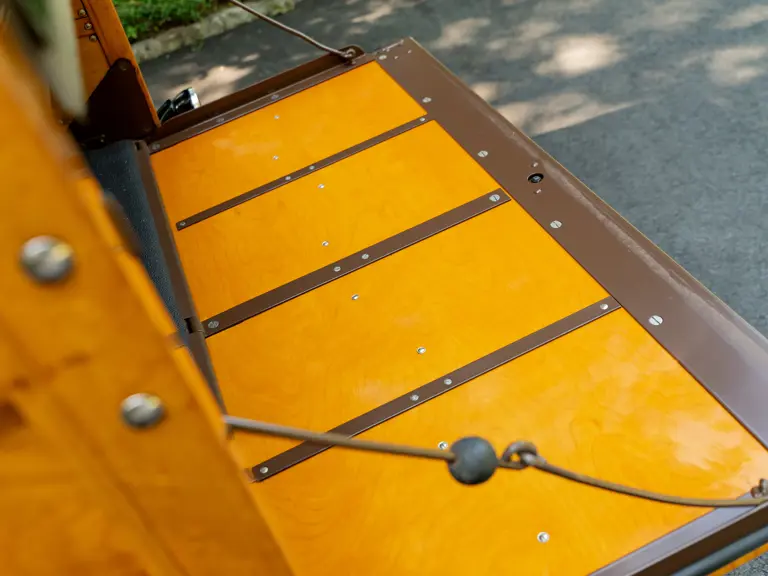
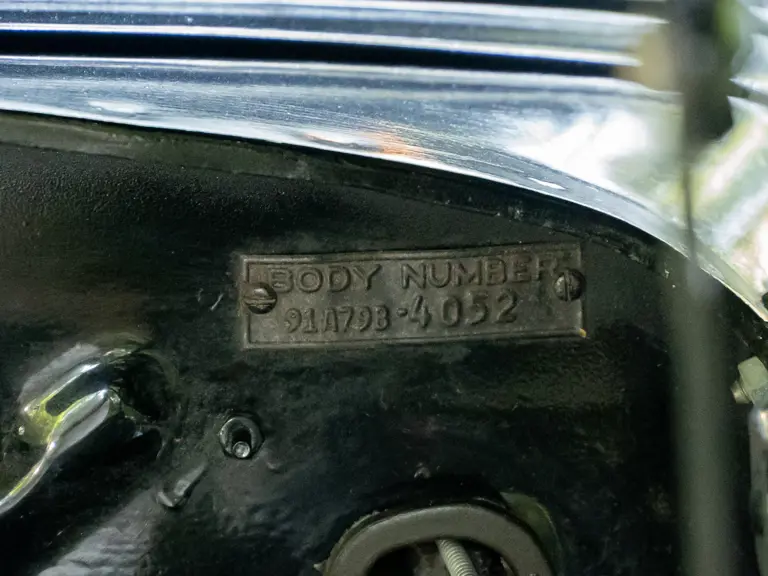
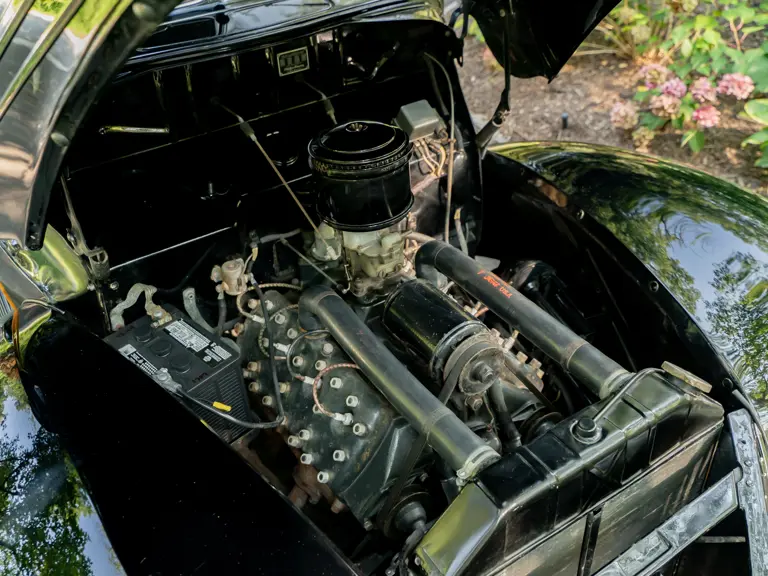
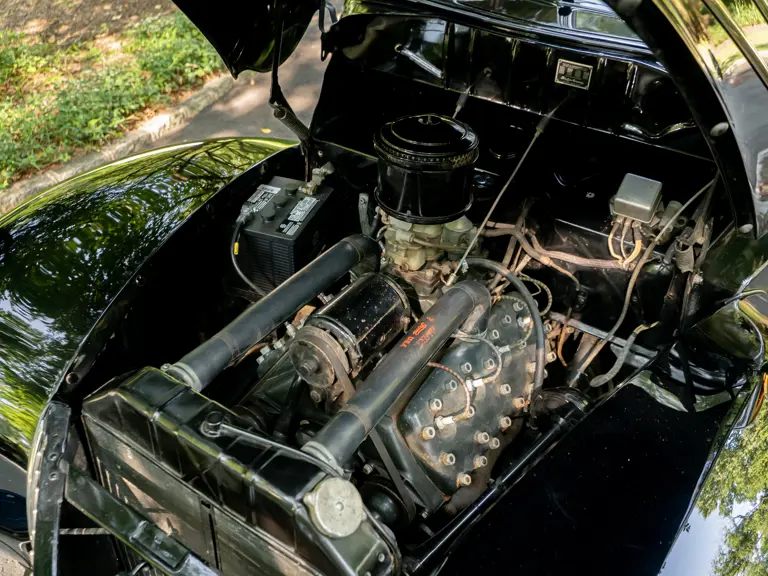

 | Hershey, Pennsylvania
| Hershey, Pennsylvania
